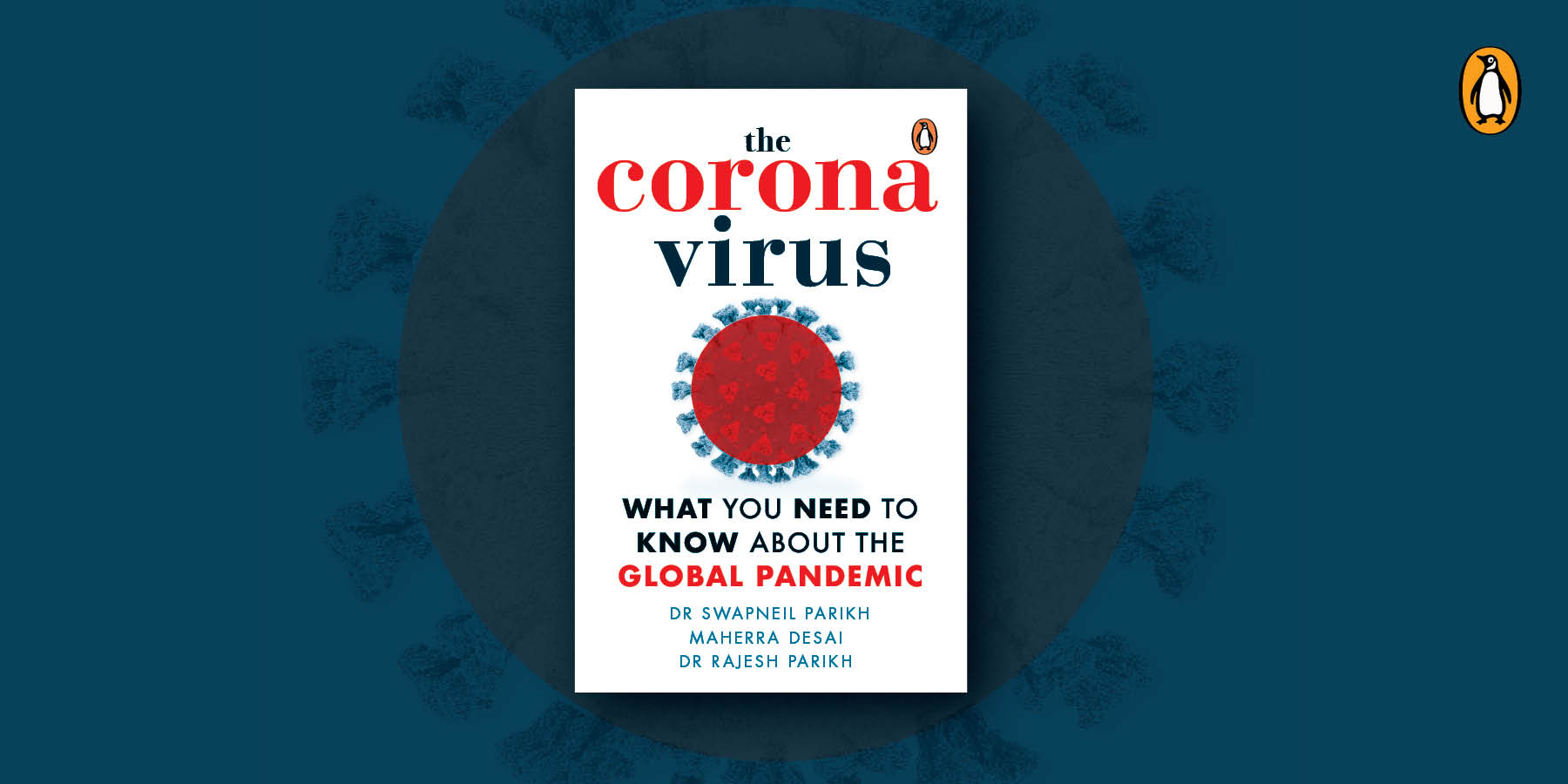
Written by Dr Swapneil Parikh, Maherra Desai and Dr Rajesh Parikh, The Coronavirus is an immense resource that comes to us at a time when accuracy of information is just as immediate and necessary as sound medical infrastructure. Dedicated to the health professionals who have been risking their lives at the frontlines of this erratic pandemic, the book dissects the disease from every possible angle in the most accessible and comprehensive way, and is a must-read for anyone trying to understand the past, present and possible future of not only the Coronavirus itself but the turning of the world at large. We bring you a few of the many predictions and speculations the authors get absolutely right.

As China lifted its restrictions, many feared the virus would spread again.
So it has. China confirmed around 1300 new cases mostly from Wuhan, Jilin and Shulan. Mid-May onwards, Wuhan managed to test every single person in its 11 million population over a ten-day period.
There is fear that cases are going undetected in some countries, especially those with weak healthcare systems. In an interview in July, Professor Brahmar Mukherjee, a leading epidemiologist, said India possibly had 30 million undetected COVID-19 cases at that time, going up to a 100 million in just six weeks.
Researching flight data of outward-bound flights from Wuhan for January 2020, many models predict that the virus should have had a wider spread than reported in many countries.
This has been confirmed. medRxiv has shown that the passengers travelling outside China two weeks before Wuhan’s lockdown were headed for Asia, Europe, the US and Australia, all of which showed unprecedented jumps in confirmed cases in the months that followed.
Information coming from China about COVID-19 related statistics has been under scrutiny for tampering. In fact, when the US started to investigate the accuracy of the Chinese data, China immediately announced an additional 1300 fatalities due to COVID-19 that had been misreported earlier. This translated to a 50% increase in total number of deaths reported from Wuhan. The authors of the book ask if China was simply sanitizing its narrative rather than doing due diligence. Turns out, it was the former.
In India, some experts continued to claim there was no community transmission, facetiously portraying the low number of confirmed daily cases as a low number of daily new infections. With few daily tests, the writers suspect that India had far more daily new infections than new daily confirmed cases.
Despite the government repeatedly denying community transmission in India, the Kerala Chief Minister Pinarayi Vijayan on July 17 confirmed that there were cases of community transmission in Kerala. In fact, when on July 19 the Indian Medical Association confirmed community transmission in the country, Dr Arvind Kumar, Chairman of the Centre for Chest Surgery, Sir Ganga Ram Hospital said that this mode of transmission had been rampant in the country for quite some time.
Many countries may already have more cases than South Korea, but unless testing is significantly scaled up, several new cases will go undetected.
This was proven true to the letter in India, US, Russia, Brazil, countries that soon surpassed every other nation after a surge of cases.
The book predicted that by mid-April, there will be thousands of COVID-19 cases detected in India, and several thousand more will go undetected.
By mid-April, India had indeed crossed the 1000 mark of COVID-19 cases. On April 13, there were 1243 new cases and the 7-day average had hit 811.
Perhaps human social contact patterns will change drastically with changing weather (unlikely), or an unprecedented successful social distancing strategy might be implemented (possible) or the virus itself could change for better or worse (possible). Any or all of these factors could affect the eventual number infected and dead.
The movement of the pandemic and related statistics has unfolded as predicted. With increased testing, the number of active cases has also increased because there is more extensive documentation of cases.
The writers of The Coronavirus wrote that millions of tests worldwide are needed, and we must prepare for an eventuality where we need billions.
This has now been acknowledged by both WHO & CDC.
The book also states that the pandemic is far from over in China which was successful at disrupting transmission by essentially shutting down the country and economy.
Beijing saw a recurrence as late as June 11, 2020 where a 52-year-old man tested positive for the virus.
It is important to state that containment and mitigation are not mutually exclusive; we must do both, but somecontainment strategies are devastating to the world economy and stigmatize the sick. While we must continue containment strategies that are effective, we must aggressively try to mitigate the destruction that COVID-19 leaves in its wake.
Many countries have adopted policies that are more tempered, attempting to strike a balance between restricting inessential movement and safely opening up the sectors which impact the economy greatly.
The book calls for a readiness to significantly change our daily lives. With a surge in cases, various countries including India are implementing drastic social distancing measures, including closure of schools, cancellation of mass gatherings, work from home, voluntary home isolation for mild cases and aggressive exposure avoidance for high-risk individuals.
Our lives have become compartmentalised into ‘pre-pandemic’ and ‘post-pandemic’. In fact, it is becoming increasingly unclear if we will ever fully return to the former.
The strategies come at a huge cost. The economic, social, developmental and mental health cost must be justified by aggressive increases in testing, tracing and treatment capacities. Social distancing strategies are never meant to be permanent; they can buy us a few weeks or months to scale up our health infrastructure. We need to use that time wisely.
This is also a widely adopted and acknowledged strategy now, with more investments being made in testing kits and ventilators.
A pandemic cannot be stopped by spending billions in North America and just a few millions in Africa. A pandemic does not respect geographical boundaries or military arsenals. There needs to be an agreement between the private sector and governments of the world that during a pandemic, medical supplies will go not to the highest bidder but will be distributed strategically to save lives.
A Californian company is now using drones to deliver medical supplies in Rwanda and Ghana, a delivery strategy that was also used in China and Chile. India has also sent medical supplies to 13 African nations.
Infections that spread via droplets are strictly speaking not airborne but can be said to be borne by air. Some nuance can be lost in the oversimplified false dichotomy of airborne versus droplet transmission; they are not mutually exclusive.
The book cited the 1934 paper on the Wells evaporation-falling curve and postulated airborne transmission long before the paper was revisited and then widely accepted.
The book states that just one sick passenger can cause an outbreak all over the world. “If a sick passenger coughed or sneezed on his hands, the virus would get deposited onto his hands. If he took out a magazine during the flight, the infectious viruses would rub off onto the magazine, and the magazine becomes a ‘fomite’”.
Having now been proved as a fact, extensive measures and restrictions have been implemented regarding travel, especially air travel.
The increase in infections isn’t because of a change in the virus but because of a change in human behaviour.
While the book anticipated this, it is now a fact accepted by all including ICMR. Recognizing the impact of human behaviour on the pandemic, news outlets have criticised gathering, inessential travel and hoarding essentials among other things. Instances like ‘COVID parties’ in the US have been severely disparaged because they end up creating coronavirus hotspots. The Outbreak Communications Planning Guide by the (WHO) states that behaviour changes can reduce the spread by as much as 80%.
However, with a new virus like SARS-CoV-2 the weather is unlikely to significantly affect transmission because the entire human population is susceptible. Across the globe, various regions experience different seasons and temperatures at one point in time. A steady increase in infected cases globally dampens hope that the weather will affect transmission.
No correlation has been established between seasonal conditions and transmission. Initial claims that tropical regions would withstand the spread better have been voided as the virus has seen an exponential surge over the hottest months in India.
What is so special about children that they seem protected? Maybe children are just healthier because they get good nutrition, plenty of exercise, regenerate better and have been exposed to lower cumulative doses of environmental pollution. Children are far less likely to smoke or to have diseases like diabetes, and their lungs have much less background inflammation. Research has indicated that children have less ACE2 and these levels increase with ageing. A child’s angiotensin system might be immature and therefore less susceptible to SARS-CoV-2 infection.
Acquired data from antibody blood tests suggests that children under the age of 12 in particular are less likely to catch the virus than adults. Scientists are also positive that children are more likely to remain asymptomatic.
Coronaviruses can also cause Antibody-Dependent Enhancement (ADE). High concentrations of antibodies prevented SARS-CoV from infecting the cells but low concentrations of antibodies caused ADE.
This has been found to be the case for COVID-19.
It is possible that varying levels of antibodies against common cold coronaviruses may be causing ADE of SARS-CoV-2 infection, but the evidence of this so far borders on speculation. High concentrations of partially cross-reactive antibodies in children may overwhelm the virus and neutralize it but low antibody levels in the elderly may cause ADE and severe infection.
This was verified for COVID-19.
When the Th1 and Th2 cells are in balance, the immune system functions properly. However, when there is an imbalance between these cells, the immune system may either be predisposed to severe infections or it may attack its own tissues.
Research found it true for COVID-19.
RT-LAMP (Reverse Transcription Loop-Mediated Isothermal Amplification) test, which is faster and easier to perform, has been combined with CRISPR, an innovation that can make it simpler, cheaper and quicker to test. The testing process can be done with minimal training and this offers tremendous promise for low resource settings.
RT-LAMP based COVID-19 diagnostic kits are in use, and Union Health Minister Harsh Vardhan has said that the test is quick, accurate and cost effective that has very low and easily manageable infrastructural needs and does not require any special expertise.
Antigen tests are rapid tests that give results in minutes. While these tests hold promise because of their low cost, quick results and simplicity, in the past similar tests have not been very sensitive. Nevertheless, there are several such tests in research and development for SARS-CoV-2 and if scientists perfect this technology, they could be combined with rapid antibody tests. These combined rapid tests, if accurate, would be powerful tools in the pandemic.
This claim has also materialised. The developed rapid test kits are easy to use, can test patients with and without symptoms, and most importantly can be deployed in COVID hotspots.
A study published in The Lancet used mathematical predictive models to test the preparedness and vulnerability of developing nations, especially African countries. Considering strong economic ties between China and many African nations, and the flight data available for travel following the outbreak and before the lockdown in China, Egypt, Algeria and South Africa had the highest chances of acquiring COVID-19, with a moderate to high capacity to manage the outbreak.
This was also proved to the very last detail. In March, out of the 1300 confirmed coronavirus cases in the African continent, Egypt, South Africa and Algeria alone accounted for over 58% of the cases.
While it is premature to gauge to what extent AI will affect the COVID-19 outbreak, AI will probably play a role in containing this outbreak and even more so in future outbreaks.
In fact, Artificial Intelligence start-ups like Closedloop, Clevy.io and Mantle Labs have been extremely active in identifying the virus and communicating related information.









